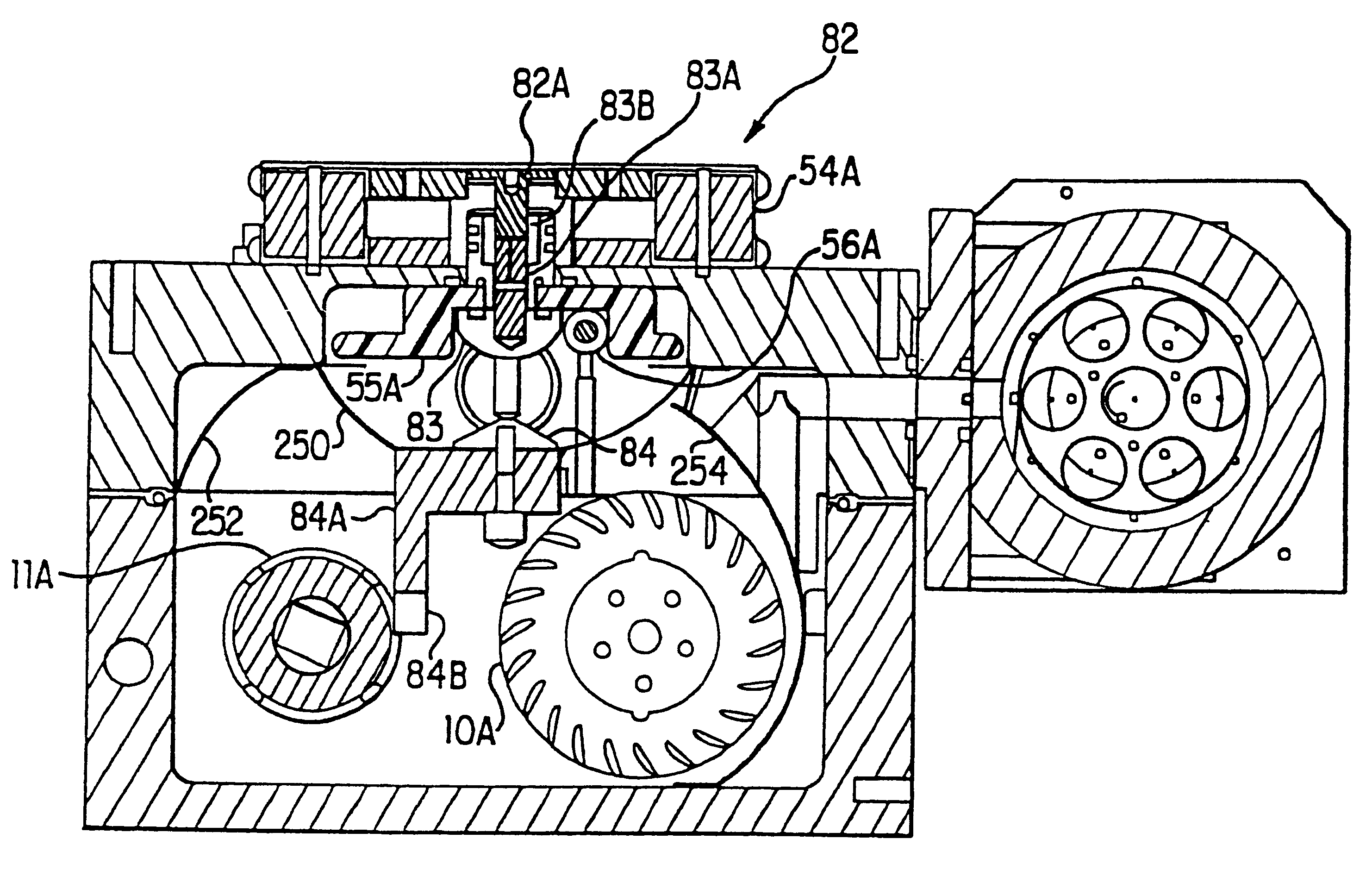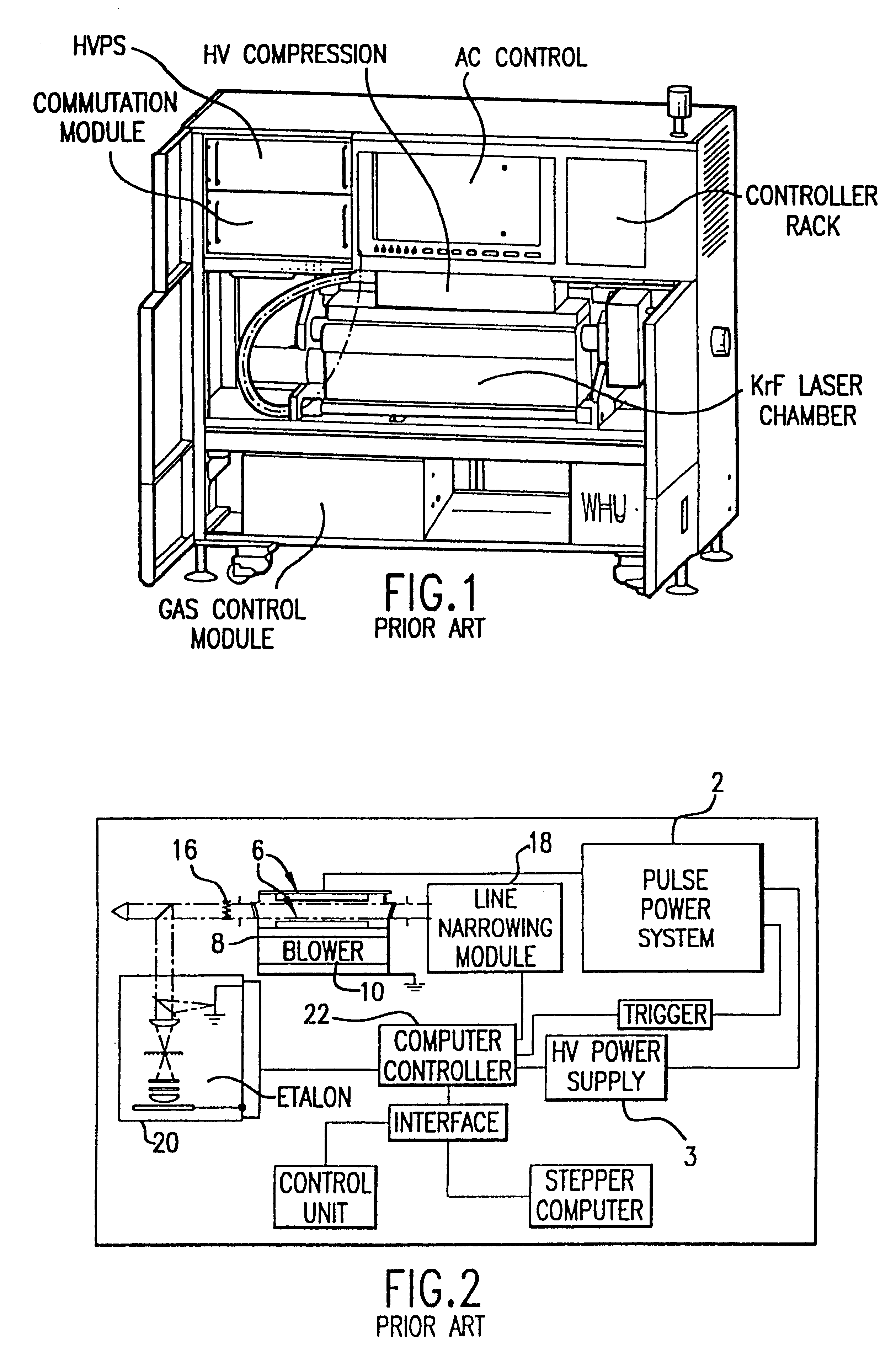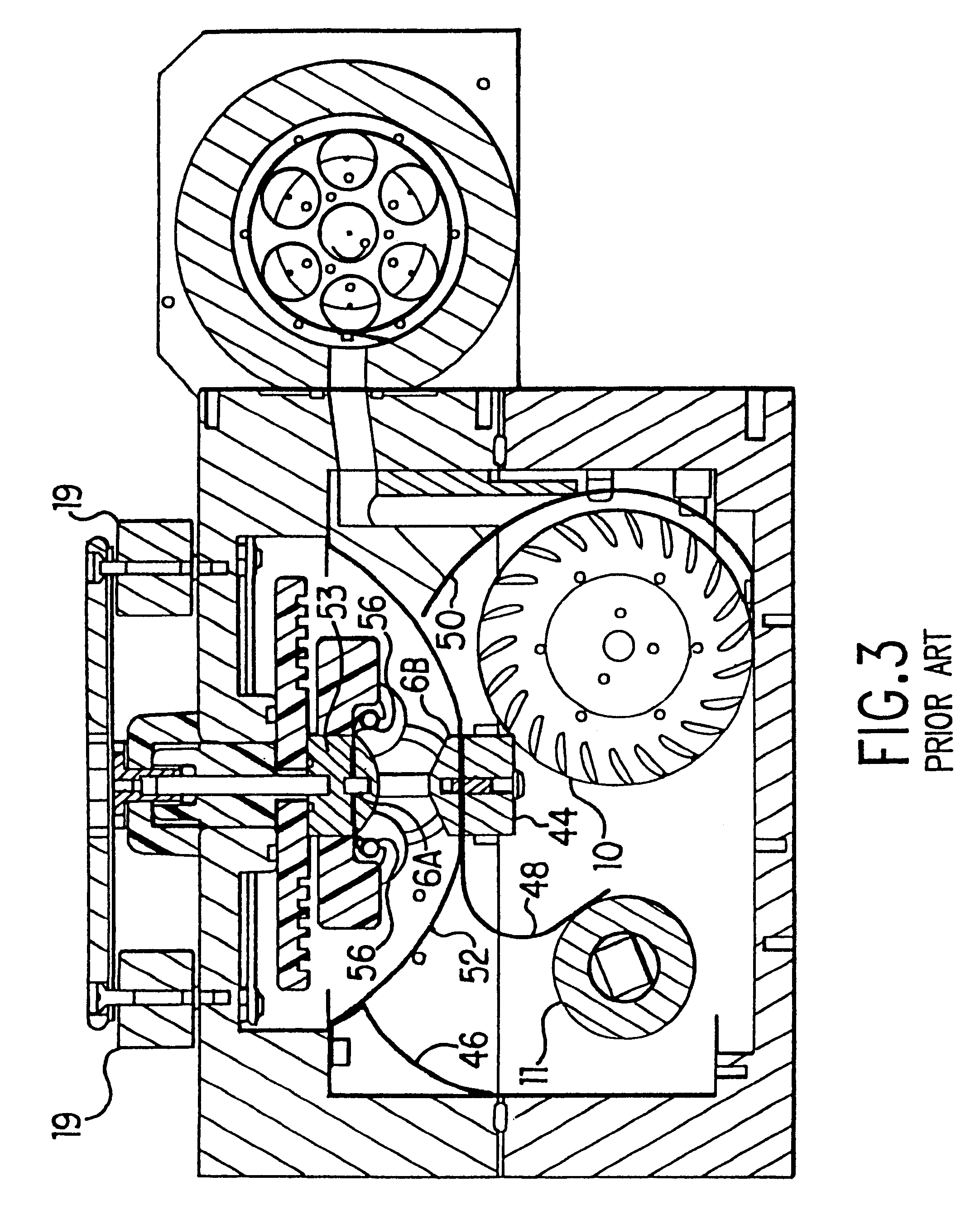Injection seeded F2 lithography laser
a lithography laser and injection seed technology, applied in the field of injection seeded f2 lithography lasers, can solve the problems of excessive wear and occasional failure of blower bearings, large and complex laser systems composed of two separate lasers, and limited commercial applications of two laser systems
- Summary
- Abstract
- Description
- Claims
- Application Information
AI Technical Summary
Problems solved by technology
Method used
Image
Examples
Embodiment Construction
Power Supply
A more detailed circuit diagram of the power supply portion of the preferred embodiment is shown in FIG. 8C. As indicated in FIG. 8C, rectifier 22 is a 6 pulse phase controlled rectifier with a plus 150 v to -150V DC output. Inverter 24 is actually three invertors 24A, 24B and 24C. Invertors 24B and 24C are turned off when the voltage on 8.1 .mu.F Co charging capacitor 42 is 50 volts less than the command voltage and inverter 24A is turned off when the voltage on Co 42 slightly exceeds the command voltage. This procedure reduces the charge rate near the end of the charge. Step up transformers 26A, 26B and 26C are each rated at 7 kw and transform the voltage to 1200 volt AC.
Three bridge rectifier circuits 30A, 30B and 30C are shown. The HV power supply control board 21 converts a 12 bit digital command to an analog signal and compares it with a feedback signal 45 from Co voltage monitor 44. When the feedback voltage exceeds the command voltage, inverter 24A is turned off ...
PUM
 Login to View More
Login to View More Abstract
Description
Claims
Application Information
 Login to View More
Login to View More - R&D
- Intellectual Property
- Life Sciences
- Materials
- Tech Scout
- Unparalleled Data Quality
- Higher Quality Content
- 60% Fewer Hallucinations
Browse by: Latest US Patents, China's latest patents, Technical Efficacy Thesaurus, Application Domain, Technology Topic, Popular Technical Reports.
© 2025 PatSnap. All rights reserved.Legal|Privacy policy|Modern Slavery Act Transparency Statement|Sitemap|About US| Contact US: help@patsnap.com



